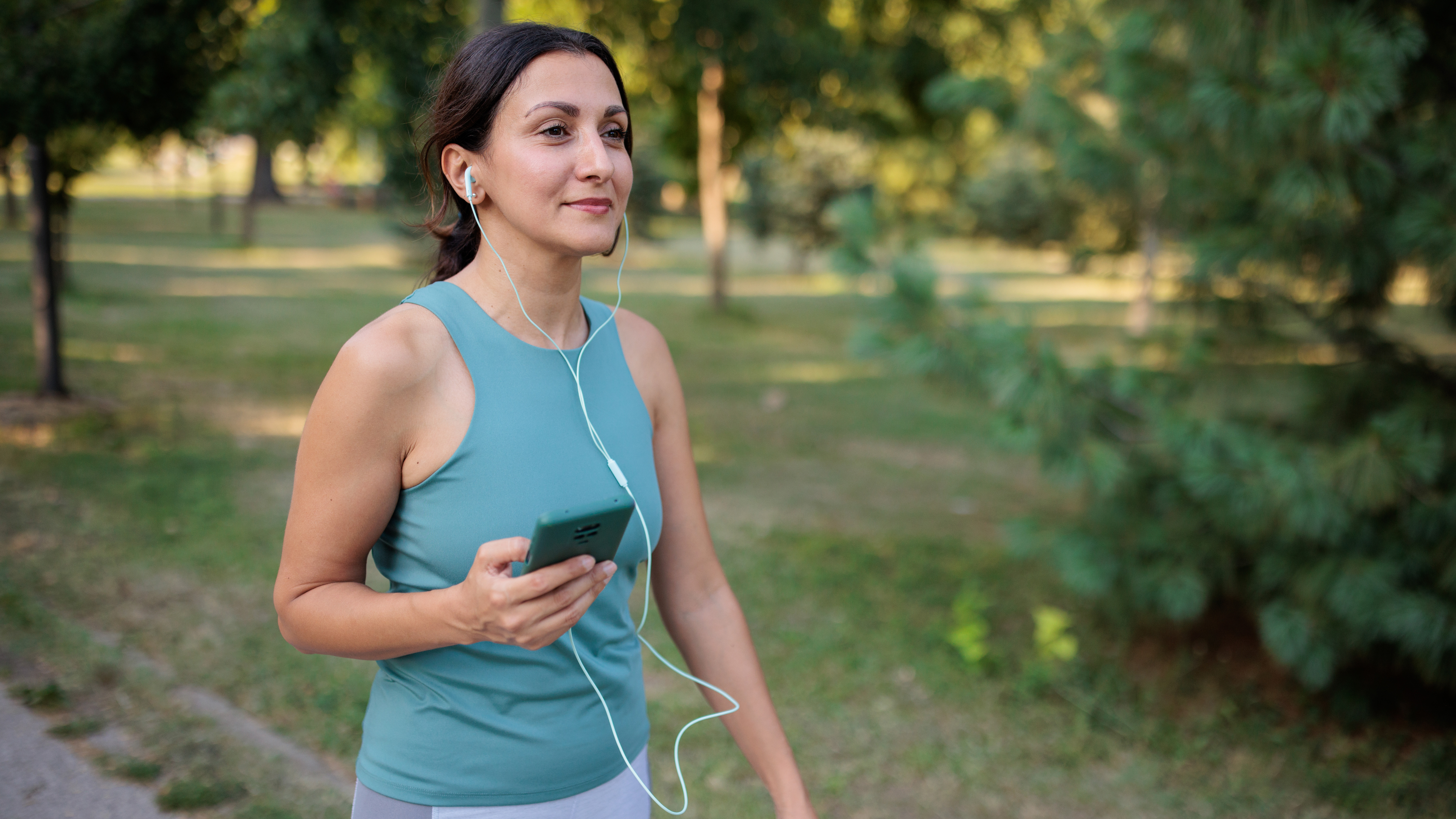A walking expert says there are two types of walking, here’s why both are important for your health
You probably don’t realise you’re doing one type, but it also contributes to your step count and improves your health

Having a step count goal can encourage you to get outdoors, move your body and raise your heart rate.
However, not every step you take during the day will be a fast-paced, outdoor stride.
Are these slower steps still valuable to our health?
I asked Dr Milica McDowell, a doctor of physical therapy, exercise physiologist, and VP of operations for Gait Happens, who told me there are two types of walking: intentional and ambient.
These two types of walking make up your overall step count for the day, and on different days, the balance between them will vary.
She says both have valuable roles to play in maintaining and promoting good health—here’s why.

Milica McDowell is a doctor of physical therapy, with more than 20 years of experience in sports orthopedics. She served for nine years as a member of the university faculty in health and human performance at Montana State University-Bozeman and is an expert in exercise, fitness, walking, shoes, healthy habit stacking, behavior change, sports medicine, orthopedics, injury prevention, posture and gait mechanics. McDowell is also a personal trainer, gym owner, 13-time Ironman finisher, 50km ultramarathon finisher and a CrossFit level 1 certified coach.
Intentional walking
An intentional walk is usually done at a faster pace over a distance and helps you get from A to B. Walking for exercise falls into this category.
Start your week with achievable workout ideas, health tips and wellbeing advice in your inbox.
There are cardiovascular and muscular conditioning benefits to intentional walking: your heart rate increases, your stress levels decrease and your mood lifts.
“If you and I were to go out for a 10-minute intentional walk, we’re getting into a rhythm,” says McDowell.
“We’re breathing rhythmically, our arms are swinging and the pelvis is rotating a little bit. Your nervous system is getting into a rhythm with all that movement.”

Intentional walks don’t have to be particularly long.
“A five-minute walk is called a micro walk,” says McDowell. “If you can add even five more minutes of walking a day, you will still see a difference in your longevity.”
A five-minute intentional walk could help you get an extra 500 steps, which can have a big impact on your health, according to a 2023 meta-analysis in the European Journal of Preventive Cardiology.
The research showed that increasing daily steps by 500 (from a 2,500 baseline) reduced the chances of death from cardiovascular causes by 7%.
McDowell also suggests partnering up for your intentional walks.

“Inviting someone along on a walk will generally make the walk longer, therefore more effective,” she says.
Partnered walks also have a positive impact on mood.
“While it’s great to have a certain step count and it’s great to do it in the right shoes, by walking with someone we can also take care of filling up our social cup and making sure that we’re engaging with our community, which can have positive impacts on mental health,” she says.
Ambient walking
McDowell explains that ambient walking is the kind of walking you do when wandering around your apartment or letting your pet out to toilet.
“Ambient walking is typically broken up, which is why we categorize a longer duration walk as intentional because you are priming your entire system and getting into a steady state” says McDowell, “versus ‘I’ve got up to go and get coffee,’ or ‘I picked up my newspaper,’ or ‘I took the dog for a spin around the block’.
“Those ambient walking steps still count, but they provide a different type of benefit.”
You don’t get the cardiovascular and muscular conditioning boost that you would from an intentional walk, but ambient walking still contributes to calorie burn.

“As long as you’re walking, we’re happy,” says McDowell.
Ambient walking steps also reflect time that you aren’t spending sitting still, which is a good thing.
Sitting for long periods is associated with a slower metabolic rate, which leads to issues with blood sugar, blood pressure and fat breakdown.
“Sitting is the new smoking,” says McDowell.
Getting up and wandering around your office space or getting a cup of coffee can break up longer periods of sitting and mitigate some of the negative effects.
Be aware that to increase your step count safely, you need to increase it slowly over time.
If you are walking 2,500 steps a day, you should only increase by a maximum of 250 steps a week to avoid injury.

👟Check out my current top recommendations👟
1. Best overall: Brooks Glycerin 22
2. Best for concrete: Hoka Clifton 9
3. Best slip-on: Hoka Transport
4. Best for wide feet: Inov8 Trailfly Ultra G 280

Lou Mudge is a Health Writer at Future Plc, working across Fit&Well and Coach. She previously worked for Live Science, and regularly writes for Space.com and Pet's Radar. Based in Bath, UK, she has a passion for food, nutrition and health and is eager to demystify diet culture in order to make health and fitness accessible to everybody.
Multiple diagnoses in her early twenties sparked an interest in the gut-brain axis and the impact that diet and exercise can have on both physical and mental health. She was put on the FODMAP elimination diet during this time and learned to adapt recipes to fit these parameters, while retaining core flavors and textures, and now enjoys cooking for gut health.
You must confirm your public display name before commenting
Please logout and then login again, you will then be prompted to enter your display name.
